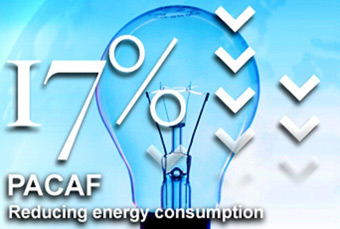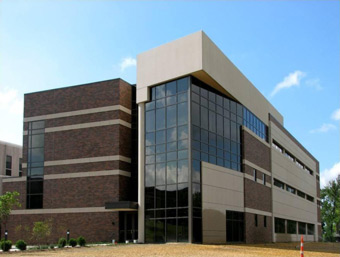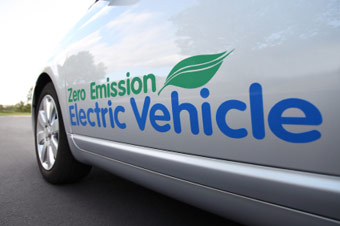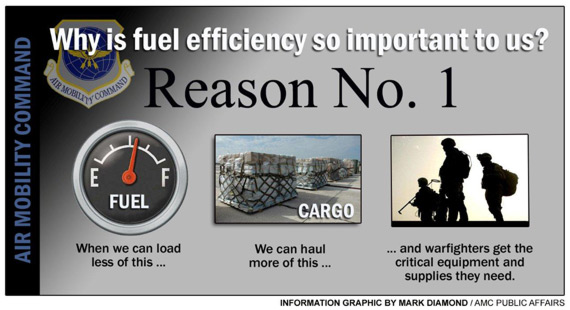U.S. Air Force: A New Paradigm for Leaner, Cleaner & Smarter Energy
As the Air Force Civil Engineer, I am charged with constructing, maintaining and operating sustainable installations for the U.S. Air Force across the globe. With nearly 60,000 Airmen, civilians and contractors under my lead, we maintain the physical plant through all phases of its lifecycle, from planning and acquisition to operation, all the way to the divestiture phase. Civil Engineers also manage natural infrastructure assets – air, land and water – ensuring installations are able to meet current and future missions. The bases we manage are the three-dimensional platforms that enable the Air Force mission “to fly, fight and win . . . in air, space and cyberspace.”
In meeting that responsibility, Air Force civil engineers also manage all facility-related energy production and consumption. And today that task means more than just developing contracts with utility companies to power our bases. Today we must take the lead in energy conservation, renewable energy utilization and energy security as the Air Force seeks to save energy, reduce costs and keep our country insulated from the volatility energy engenders. Every Airman in the Air Force is charged to “make energy a consideration in all we do,” and through active awareness and training programs we enforce that charge. What I have learned, as have all senior leaders in the Air Force, is that our country is in a new energy paradigm, and we can no longer use energy at will without regard to the consequences. We must make a commitment, plain and simple, to re-think the way we use – and view – energy.

U.S. Air Force Photo Illustration
For the Air Force, this commitment is made easier by the recognition that energy enables our mission. In fact, when you look at it, energy is a key driver of our ability to “fly, fight and win” both strategically and tactically. Reducing energy and fuel usage means decreasing the number of Airmen we put in harm’s way protecting highly vulnerable supply convoys in Iraq and Afghanistan. It means promoting energy independence, and it means boosting national security.
With these thoughts in mind then, here’s the three-pronged approach the U.S. Air Force is taking to accomplish our mission and reach our energy goals. We aim to reduce demand, increase supply and – perhaps most importantly – change the culture. If you flesh these out a bit, we seek to reduce energy demand through energy conservation and efficiency gains; we aim to increase supply of energy by meeting more of our energy needs with alternative and renewable sources; and we continue to work to change the culture through messaging, on-base activities and a focus on energy awareness and education. This education initiative starts from an Airman’s first day wearing Air Force blue.
In the Civil Engineer community, we have adapted these goals to fit our specific mission of managing Air Force installations and building infrastructure. We have translated the three Air Force energy pillars into “leaner installations, cleaner sources and smarter decisions.” And to help, we’ve put some numbers behind these taglines to turn them into actionable, attainable and measurable goals. For example, under “leaner installations” we aim to reduce facility energy intensity by 3 percent a year through calendar year 2015 (energy intensity is defined as BTUs used per square foot of building space). In terms of “cleaner sources,” we endeavor to increase the use of renewable energy to an annual target of 25 percent for facility energy usage by calendar year 2025. In regard to “smarter decisions,” we have begun a systematic communication and education strategy that ensures energy is a consideration for not only our senior officers, but all Airmen in the civil engineer community.
Now, attaining goals is often easier said than done so let me take a few moments to demonstrate to you that, indeed, Air Force civil engineers are committed to excelling in this new energy paradigm.

United States Army Corps of Engineers
In terms of leaner installations, since 2007 every new building in the Air Force has been mandated to be designed to meet the U.S. Green Building Council’s (USGBC) Leadership in Energy and Environmental Design (LEED) standards. This policy has led to the construction of 10 new facilities and 736 homes that are LEED Silver certified. Forty-six other buildings are currently on track for the Silver designation and four others are seeking LEED Gold certification. At Tyndall Air Force Base in Panama City, Fla., the new state-of-the-art fitness center will use 40 percent less energy than a typical building its size and is expected to become the first Department of Defense facility to reach LEED Platinum level, USGBC’s highest attainable certification. In addition, more than 180 active construction projects are today incorporating sustainable roof attributes (cool roofs, vegetative roofs and solar panels). These buildings and our commitment to build facilities to green standards add up to exceptional long-term benefits for the Air Force.
In regard to cleaner sources of energy, once again civil engineers are out in front. Renewable energy projects are in operation on 45 bases and engineers at the Air Force Facility Energy Center (AFFEC) expect the number of projects to double by 2015. Solar energy production alone is set to quadruple when three new projects in the southwest United States come online in the next few years. Beyond solar, AFFEC engineers anticipate expanding into the biomass arena. Two wood waste plants, each with capacities of 15 to 25 megawatts, are being considered for Eglin Air Force Base, Fla., and Robins Air Force Base, Ga. The list goes on and includes wind, landfill gas and geothermal projects.

© iStockphoto.com/gchutka
As great as these developments are, perhaps the most important commitment we can make is towards our third goal of making smarter decisions and changing the culture when it comes to energy. I’ve seen studies that show up to 30 percent of an organization’s energy savings can be made simply by changing the way people view – and thereby use – energy. To start our way toward that goal, Air Force civil engineers are engaged in numerous educational and communications initiatives with the idea that civil engineers should “Think Green, Build Green, Fly Blue.” Our efforts on this front include the development of energy awareness programs that encourage competition among squadrons for increasing energy efficiency and conservation. We have developed “Energy Footprint” questionnaires to increase energy awareness and to encourage everyone to reduce their energy footprint. Many of these initiatives happened from the ground up, starting out at installation level or Major Command level. I’m encouraged by this enthusiasm.
Because of these efforts, I am proud to report we have had strong initial success in meeting our objectives. Energy intensity is down 14.8 percent since 2003. Renewable energy from wind, solar, biomass and geothermal sources represents nearly 6 percent of our energy portfolio and smart meters have been installed at over 80 percent of our facilities. We recently completed a successful Energy Awareness Month, and more and more Airmen are aware of the need to change their professional – and personal – approach to energy usage. It is not a stretch to say we are well on our way to meeting our commitments in terms of energy, a fact that not only encourages me, but makes me proud.
With that said, the U.S. Air Force, and the Civil Engineer community in particular, needs to maintain this momentum. I believe we will, as our commitment to energy is not only a fundamental belief, but also an operational imperative. In the Air Force we know that leaner, cleaner and smarter energy use means greater energy security. And that saves lives and serves our national interest. We are serious about this commitment, proud to execute it on behalf of the American people and excited for the future.





























